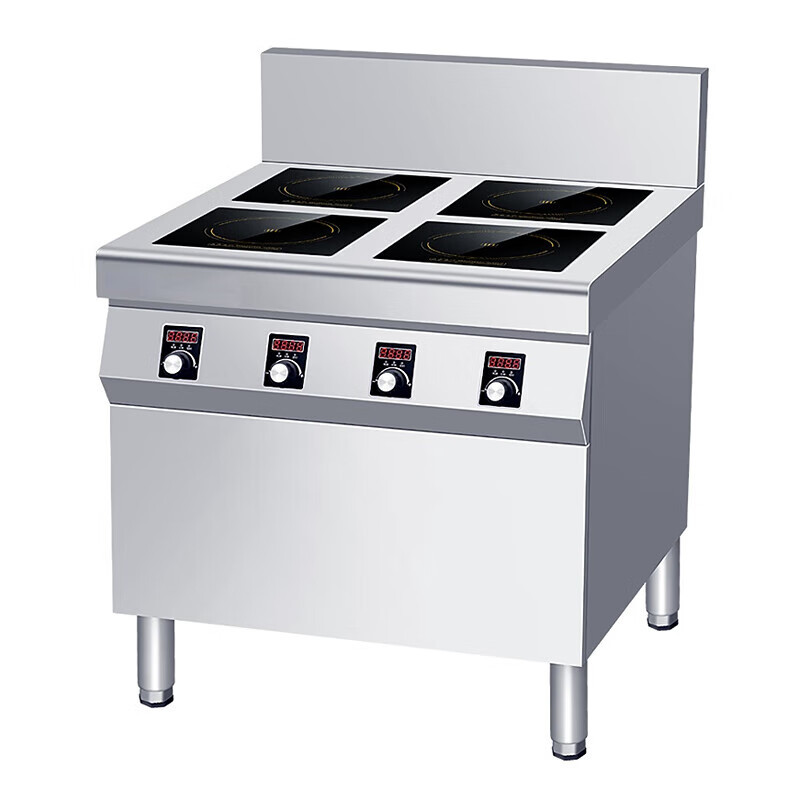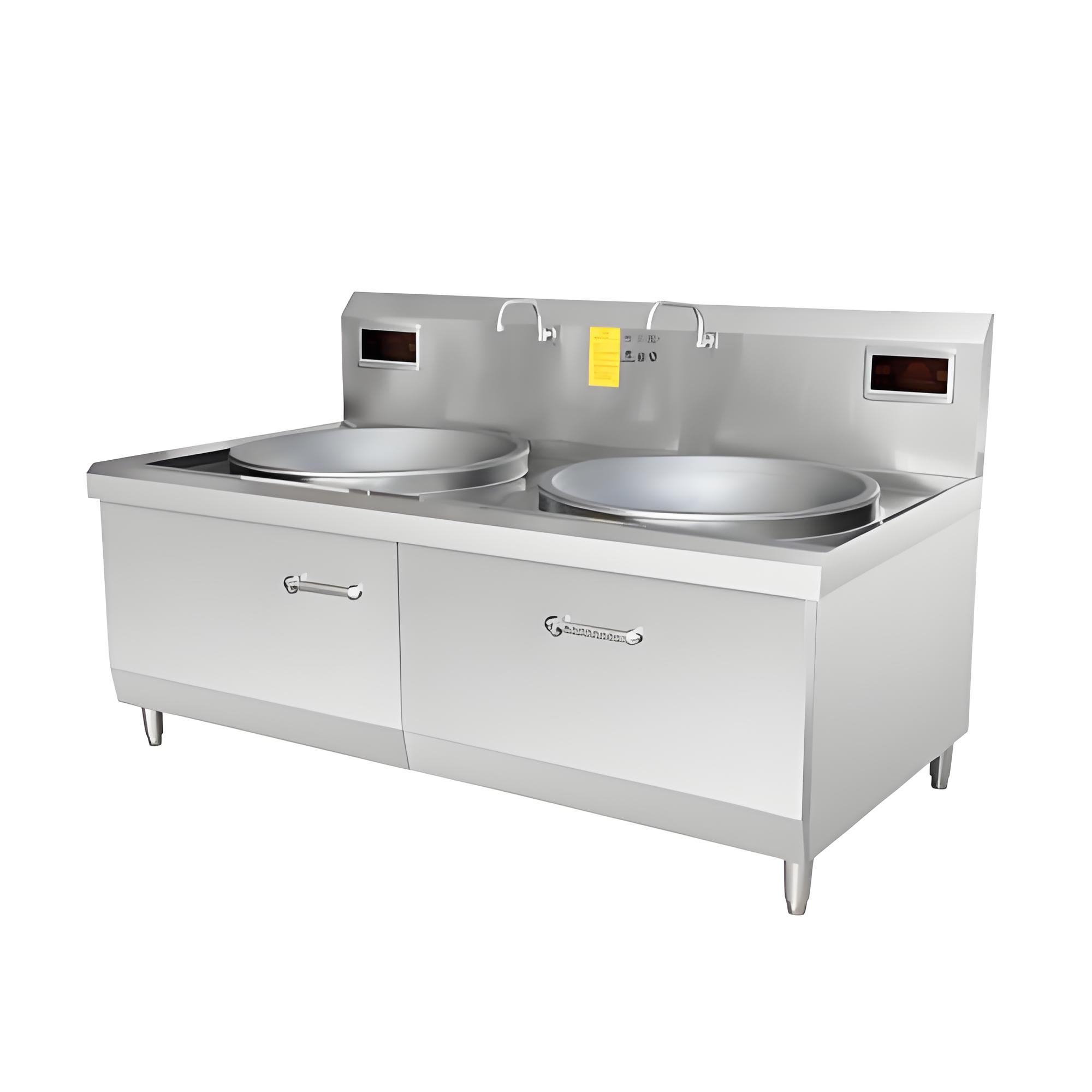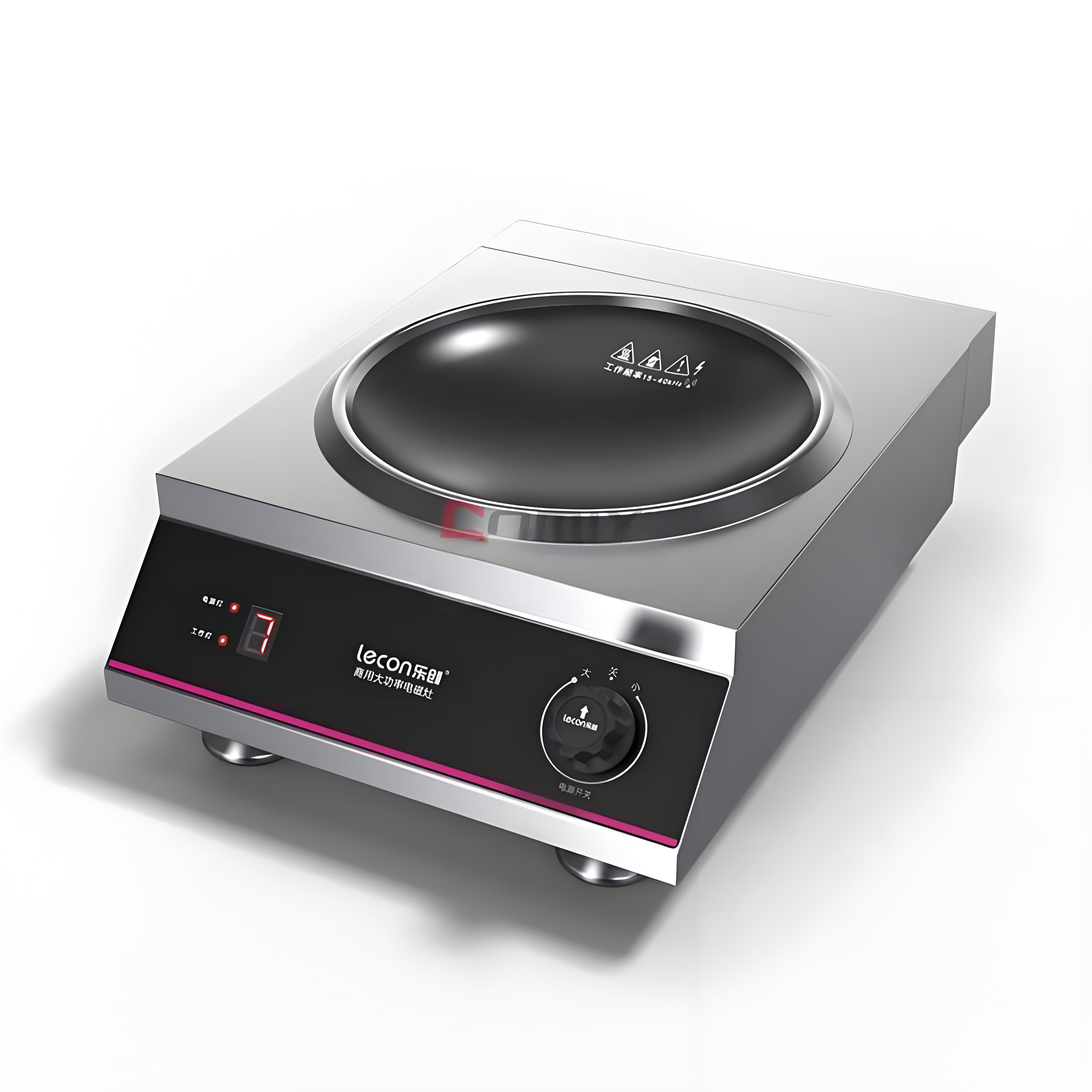As someone who’s been in the commercial kitchen equipment industry for over a decade, I’ve seen trends come and go, but few have sparked as much curiosity as commercial induction cookers. When I first encountered them in a bustling restaurant kitchen, I was skeptical—could they really live up to the hype of being faster, safer, and more energy-efficient than traditional gas or electric cooktops? Clients often ask me, “Do these cookers actually save energy, or is it just marketing fluff?” After years of working with chefs, restaurant owners, and suppliers, I’ve dug deep into the data and real-world performance to answer this question. Spoiler alert: the truth is nuanced, but there’s a lot to love about induction if you understand how it works and how to use it right. Let’s break it down.

Why Energy Efficiency Matters in Commercial Kitchens
Running a commercial kitchen is like managing a small power plant—energy costs can eat up a huge chunk of your budget. From powering ovens to keeping the lights on, every watt counts. For restaurant owners, caterers, or hotel kitchens, the question isn’t just about whether a cooker is energy-efficient but how much it can save in the long run and whether it’s worth the upfront investment. Induction cookers have gained traction because they promise to cut energy bills while delivering top-notch cooking performance. But to understand if they deliver, we need to look at how they work, compare them to gas and electric alternatives, and weigh the practical factors that affect their efficiency in real-world settings.
How Induction Cookers Work
Unlike gas or traditional electric cooktops, induction cookers use electromagnetic fields to heat cookware directly. A copper coil beneath the cooktop’s ceramic surface generates a magnetic field when powered. This field induces electric currents (called eddy currents) in compatible cookware—think cast iron or stainless steel—which heats the pan itself. The cooktop surface stays relatively cool, and no energy is wasted heating the air around the pan. This direct heat transfer is what makes induction cookers stand out.
In my early days consulting for a chain of Asian restaurants, I saw firsthand how induction burners could boil broth for hot pot in seconds, while the surrounding table stayed cool enough to touch. That efficiency intrigued me, but I wanted to know the numbers behind the magic. According to the U.S. Department of Energy, induction cooktops achieve an energy transfer efficiency of about 85%, compared to 32% for gas and 75-80% for electric resistance cooktops. That’s a significant leap, but does it translate to real savings in a commercial setting? Let’s dive deeper.
The Energy-Saving Case for Induction Cookers
1. Superior Energy Efficiency
The biggest selling point of induction cookers is their ability to minimize energy waste. Traditional gas burners lose up to 60% of their heat to the surrounding air, heating the kitchen instead of the food. Electric resistance cooktops are better, but they still lose energy because the heating element must first warm up before transferring heat to the pan. Induction, by contrast, heats the cookware directly, with 90% of the energy going straight to cooking, according to some studies. In a busy restaurant where burners are on for hours, this efficiency can add up.
I once worked with a mid-sized bistro that switched from gas to induction cooktops. Their monthly electricity bill dropped by about 15%, even though they were cooking the same volume of food. The chef also noted that the kitchen stayed cooler, reducing the strain on the HVAC system—a hidden energy saver.
2. Faster Cooking Times
Induction cookers heat up faster than gas or electric alternatives. For example, Consumer Reports found that induction cooktops can boil water 20-40% faster than gas or electric resistance models. In a commercial kitchen, where time is money, this speed translates to less time running the cooker and lower energy consumption overall. For instance, an 1800-watt induction cooker can boil five gallons of water in 22 minutes, compared to 36 minutes for a 12,000 BTU gas burner.
In my experience, kitchens that rely on high-volume prep—like those serving noodle dishes or stir-fries—benefit most from this speed. One client, a fast-casual Asian chain, reported that their induction cookers cut prep time by 25%, allowing them to serve more customers during peak hours without increasing energy costs.

3. Reduced Kitchen Heat and Ventilation Costs
Gas cooktops are notorious for heating up the kitchen, which means more energy spent on cooling systems. Induction cookers, because they don’t heat the surrounding air, keep kitchens cooler. This is a game-changer in commercial settings, where ventilation and air conditioning can account for 20-30% of energy costs. In one project, I helped a hotel kitchen in a tropical climate switch to induction. The reduced need for ventilation saved them nearly $5,000 annually on energy bills.
4. Safety Features That Save Energy
Induction cookers come with built-in safety features like auto-shutoff and pan detection, which prevent energy waste. If no cookware is present or if the pan is removed, the cooker stops heating immediately. This is particularly useful in hectic commercial kitchens where burners might accidentally be left on. I’ve seen chefs forget to turn off gas burners during a rush, wasting fuel. With induction, that’s not an issue.
The Other Side: Challenges and Limitations
While induction cookers have clear energy-saving advantages, they’re not a magic bullet. Here are some challenges I’ve encountered:
1. High Upfront Costs
Commercial induction cookers are pricier than gas or electric models. A high-end double-burner induction cooktop can cost $2,000-$5,000, compared to $1,000-$2,500 for a comparable gas unit. For small businesses or startups, this upfront cost can be a hurdle. However, I’ve seen clients recoup the investment within 1-2 years through energy savings, especially in high-volume kitchens.
2. Cookware Compatibility
Induction cookers require ferrous cookware (like cast iron or stainless steel). If your kitchen uses aluminum or copper pans, you’ll need to invest in new cookware, which adds to the initial cost. I once advised a client who underestimated this expense—they spent an extra $3,000 on compatible pots and pans. To avoid surprises, test your existing cookware with a magnet; if it sticks, it’s induction-ready.
3. Power Supply Requirements
Induction cookers often require high-voltage electrical setups (e.g., 208-240V for commercial models). Older kitchens may need electrical upgrades, which can cost $1,000-$5,000 depending on the setup. I’ve worked with restaurants that delayed switching to induction because of these costs, but those in newer buildings had no issues.
4. User Learning Curve
Chefs accustomed to gas or electric cooktops may need time to adapt to induction’s precise temperature control. In one kitchen I consulted for, the staff initially overused high heat settings, negating some energy savings. Training and proper usage are key to maximizing efficiency.

Real-World Energy Savings: A Comparison
To give you a clearer picture, let’s compare the energy consumption of a commercial induction cooker, a gas burner, and an electric resistance cooktop in a typical restaurant scenario. Assume a kitchen operates a single burner for 5 hours daily at an electricity rate of $0.12 per kWh and a gas rate of $1.50 per therm.
|
Cooker Type |
Efficiency |
Daily Energy Use |
Daily Cost |
Annual Cost |
|---|---|---|---|---|
|
Induction (3000W) |
85% |
7.5 kWh |
$0.90 | $328.50 |
|
Electric Resistance (3000W) |
75% |
8.5 kWh |
$1.02 | $372.30 |
|
Gas (30,000 BTU) |
32% |
0.94 therm |
$1.41 | $514.65 |
Data based on U.S. Department of Energy efficiency metrics and industry averages.
This table shows that induction cookers can save up to 36% compared to gas and 12% compared to electric resistance cooktops annually. For a kitchen with multiple burners, these savings multiply. In my experience, restaurants with high cooking volumes see the most significant benefits.
Practical Tips for Maximizing Energy Savings
Based on years of working with commercial kitchens, here are my top tips for getting the most out of an induction cooker’s energy efficiency:
Use the Right Cookware: Choose flat-bottomed, high-quality ferrous cookware that matches the burner size to ensure optimal energy transfer. Mismatched or poor-quality pans can reduce efficiency by 10-15%.
Leverage Low Settings: Induction cookers allow precise control. Use lower heat settings for simmering or slow cooking to save energy. I’ve seen chefs cut energy use by 20% just by adjusting habits.
Invest in Training: Train staff to use induction cookers effectively. For example, avoid maxing out the heat unless necessary, as high settings consume more power.
Use Lids: Cooking with lids traps heat, reducing cooking time and energy use. In one kitchen, adding lids to pots cut boiling times by 10-15%.
Maintain Equipment: Regularly clean the ceramic surface and check for coil issues to maintain efficiency. A dirty cooktop can reduce performance.
Consider Portable Units: For smaller operations, portable induction burners (e.g., 1800W single-burner models) are cost-effective and energy-efficient for specific tasks like catering or food trucks.
My Real-World Experience
When I helped a high-end restaurant in Singapore transition to induction, the results were eye-opening. They replaced four gas burners with two double-burner induction cooktops. The initial investment was steep—about $8,000 for equipment and cookware—but their energy bills dropped by $1,200 per month. The cooler kitchen also improved staff comfort, and the chef loved the precise control for delicate sauces. However, they hit a snag with power supply compatibility, which required a $2,000 electrical upgrade. The lesson? Plan for infrastructure costs upfront.
In another case, a small café I worked with opted for portable induction burners to test the waters. They saved $500 annually per burner compared to their old electric cooktop, and the staff found them easier to clean. The café owner later upgraded to a full induction range, confident in the long-term savings.
Are There Hidden Costs?
Beyond the upfront costs, there are a few hidden factors to consider:
Maintenance: Induction cooktops have fewer moving parts than gas burners, so maintenance costs are lower. However, repairs can be pricier due to specialized components. I’ve seen repair bills range from $200-$500 for commercial units.
Electricity Rates: Energy savings depend on local electricity costs. In areas with high rates, the savings may be less pronounced compared to gas. Check your local rates before deciding.
Staff Turnover: If your kitchen has high turnover, you’ll need to repeatedly train new staff on induction use, which can be a time cost.

The Bigger Picture: Environmental and Health Benefits
Energy savings aren’t just about dollars—they’re also about sustainability. Induction cookers produce no indoor air pollutants like carbon monoxide or nitrogen oxides, which gas stoves emit. A 2022 study linked gas stove use to 12.7% of childhood asthma cases in the U.S. In commercial kitchens, where ventilation is critical, this is a huge plus. Plus, induction cookers align with global trends toward electrification and reduced fossil fuel use, especially in regions like California, where over 70 cities have adopted measures to limit gas infrastructure in new buildings.
I’ve worked with eco-conscious restaurants that switched to induction not just for savings but to appeal to environmentally aware customers. One client marketed their “green kitchen” and saw a 10% increase in foot traffic after promoting their sustainable practices.
Future Trends in Commercial Induction Cooking
Looking ahead to 2025 and beyond, induction technology is only getting better. Manufacturers are introducing zoneless induction cooktops that can heat any part of the surface, improving flexibility for large cookware. Panasonic’s “Met-All” technology, for example, allows induction cookers to work with non-ferrous metals like aluminum, expanding cookware options. Additionally, smart induction cooktops with temperature sensors and automated power adjustment are becoming more common, further boosting efficiency.
I’m also seeing more incentives for adopting induction. In the U.S., the Inflation Reduction Act offers rebates of up to $840 for residential induction cooktops, and some regions provide similar incentives for commercial kitchens. Check local programs like Ava Community Energy’s Health-e Communities for potential savings.
Conclusion
So, are commercial induction cookers really energy-saving? In my experience, the answer is a resounding yes—but with caveats. Their 85% energy efficiency, faster cooking times, and reduced ventilation costs make them a smart choice for most commercial kitchens. However, the upfront costs, cookware requirements, and potential need for electrical upgrades mean you need to plan carefully. For high-volume kitchens or those in regions with high electricity rates, the savings can be substantial. For smaller operations, portable units offer a low-risk way to test the waters.
My advice? Crunch the numbers for your specific kitchen, invest in quality cookware, and train your staff to use induction effectively. With the right approach, induction cookers can save you money, make your kitchen safer, and help you cook smarter. If you’re ready to make the switch, you’re not just saving energy—you’re future-proofing your kitchen.

Related Q&A
1. How much can a commercial kitchen save with induction cookers?
Savings depend on usage and local energy rates, but a typical restaurant can save $300-$1,200 annually per burner compared to gas, based on my projects. High-volume kitchens see the biggest returns.
2. Are induction cookers safe for busy commercial kitchens?
Absolutely. They don’t heat up without cookware, have auto-shutoff features, and produce no open flames, reducing fire risks. I’ve seen them thrive in high-pressure environments.
3. What cookware works best with induction?
Cast iron, stainless steel, or enameled iron work best. Test with a magnet—if it sticks, it’s compatible. Flat-bottomed, high-quality pans maximize efficiency.
4. Do induction cookers require special maintenance?
They’re low-maintenance due to fewer moving parts, but keep the ceramic surface clean and avoid overloading the coils. Repairs can cost $200-$500 for commercial units.
5. Are there government incentives for switching to induction?
In the U.S., programs like the Inflation Reduction Act offer rebates up to $840 for residential units, and some regions have commercial incentives. Check with local energy providers or government websites.





